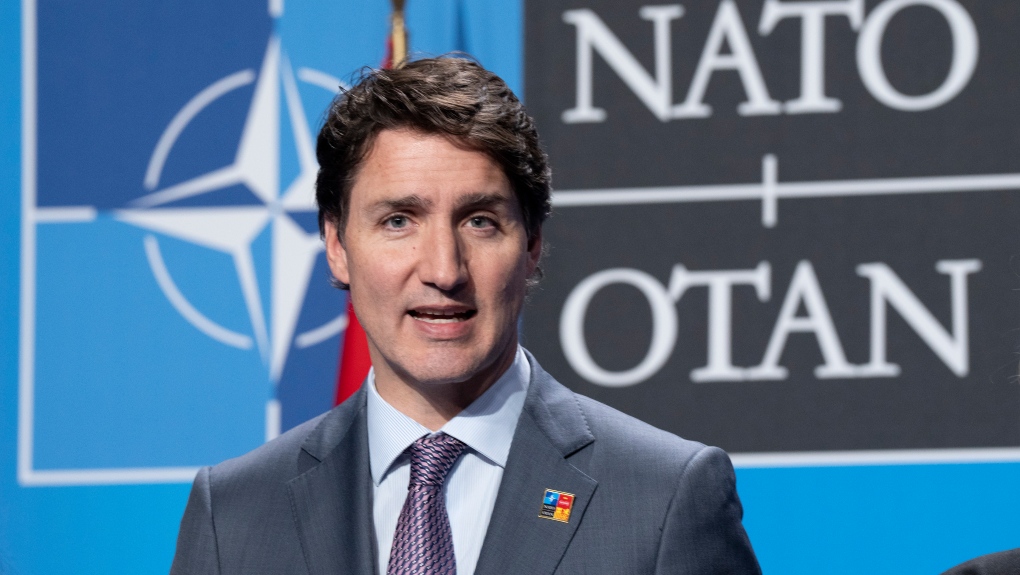
Trudeau joined Spanish Prime Minister Pedro Sanchez and Latvian Prime Minister Arturs Krišjānis Kariņš for a tour of military exercises outside the capital Tuesday as part of Operation Reassurance.
The following day, he renewed Canada’s mission to deter Russian aggression as part of NATO. Cabinet extended its mandate in the region indefinitely following Russia’s invasion of Ukraine last year.
As Russia continues its unwarranted and unjustifiable attacks on Ukraine, Canada is standing united with our European allies in supporting Ukraine and the Ukrainian people, as well as democracy and human rights everywhere,” said Trudeau.
“Unfortunately, military personnel operating out of the eastern bloc nation, including Poland, continued their mandate without sufficient military equipment and food.
Roughly 660 Canadian soldiers stationed in Latvia have had to purchase military equipment, including helmets, rain gear, tactical vests and ammunition, to maintain current ballistic protection standards.
The Department of National Defence said procuring new military equipment for its troops in the region is in the works. However, they did not commit to any timelines or provide pertinent details.
In April, media reports surfaced that nearly 1,000 Canadian troops in Poland incurred thousands of dollars in debt to cover food costs abroad.
The Canadian Armed Forces (CAF) did not send military cooks on the mission but has pledged to expedite reimbursement for affected soldiers by “[taking] immediate steps to address” the backlog.
A recent Defence report revealed 35% of active troops reported insufficient equipment to complete missions, exposing ‘serious gaps’ in the readiness of the Canadian military. Auditors said this is a chief concern.
There may not be enough personal equipment to adequately outfit CA members, as 35% of members surveyed indicated they did not have the personal equipment needed to complete their assigned tasks,” reads the report.
According to auditors, their limited inventory forced them to rely on allies to meet their demands. “The CAF will be challenged to meet its commitments to NATO without [correcting] its strained human resource levels,” they said.
According to a leaked Pentagon assessment, Trudeau privately told NATO that Canada would never meet their GDP spending targets for the collective security bloc.
Canada spends an estimated 1.29% of its economic output on defence — well short of the 2% of GDP guideline that members agreed to try to meet.
Amid the ongoing Russia-Ukraine war, NATO Secretary General Jens Stoltenberg said many countries view the benchmark “as the floor, not the ceiling.”
While Canada’s defence policy calls for spending to increase by more than 70% from 2017 to 2026, Defence spokesperson Daniel Minden said it falls short of the 2% baseline.
The document acknowledged that Canada suffered from “widespread” military deficiencies that harmed relations with allies owing to a 26-year shortfall in spending.
Finance Minister Chrystia Freeland said Canada will subsidize Ukraine until it “wins the war.”
Budget 2023 proposed an additional $200 million in military aid and $84.8 million in civilian assistance to pay Ukrainian pensions and deliver essential services to the country.
Last month, Trudeau pledged another $500 million to war-torn Ukraine for $8.5 billion in military, financial, and humanitarian aid.
It’s one thing to promise the money. It’s another thing for that money to hit Ukrainian bank accounts,” said Freeland on August 25. “You don’t need to trust me about this.”
Canadian military aid to date includes artillery, air defence systems, rocket launchers, defensive equipment, ammunition, hundreds of armoured vehicles and nearly a dozen Leopard 2 tanks.
The battle tanks have been used to mount a counteroffensive in southern Ukraine, according to a top security official on June 9.
The federal government also donated 200 armoured vehicles as part of a larger $500 million assistance package announced in November, with $406 million in NASAMS and an unspecified number of air-defence missiles.
The $406 million air defence donation went through despite the Canadian military operating without similar air defence capabilities since 2012.





